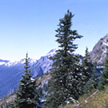| |
Report: Agricultural Nutrient Management in the Shuswap Watershed for Maintaining and Improving Water Quality: Literature Review and Nutrient Management Strategies
| Report Documents
|
|
|
| |
| Map Plotfiles
|
-
No files of this type available
|
| |
| Data Files
|
-
No files of this type available
|
| |
| Digital Map Files
|
-
No files of this type available
|
| |
| Image Document
|
-
No files of this type available
|
| |
| Video Files
|
-
No files of this type available
|
| |
|
All Documents
|
|
|
| Contact
|
|
-
If you have any questions on the information presented, or require additional report data or attachments, please contact the Report Contact
|
|
|
Water quality monitoring data collected by the Shuswap Lake Integrated Planning Process group (SLIPP) between 2011 and 2013 showed that the Shuswap, Salmon and Eagle Rivers had elevated levels of phosphorus during the spring snowmelt period and the late spring-early summer high water period relative to other lake tributaries.
|
Author: Ruth McDougall;
|
|
|
Date Published: Aug 2014
|
Report ID: 43784
|
Audience: Government and Public
|
These rivers were found to be contributing a substantial amount of phosphorus to Shuswap and Mara Lakes during this time of year, with the Shuswap River contributing significantly more than either the Salmon or Eagle Rivers. Modelling of the water quality data suggested
that agriculture is the largest contributor of phosphorus in these river basins.
As a result of the 2011-2013 water quality data and the data modelling, the Shuswap Watershed Council commissioned a review of current strategies for mitigating the impacts of agricultural-source nutrients, focussing on phosphorus as the nutrient of most concern in most fresh water systems and on watershed-based programs and practices successfully implemented elsewhere. Based on the review of literature, a strategy to address agricultural-source phosphorus in the Shuswap watershed was to be developed tailored to the specific conditions along the three impacted rivers in the watershed. This report presents the results of the literature review, summarizes the types of agriculture along the rivers and the current strategies for phosphorus management in agriculture in B.C. It also contains a discussion
of the mechanisms by which phosphorus may be entering surface water from farmland along the rivers, and some mitigation strategies.
The area considered in this report includes sections of three tributaries of Shuswap Lake; the Shuswap River from the outlet at Mabel Lake to the inlet at Mara Lake including Fortune Creek which runs from just north of Armstrong to Enderby; the Salmon River from Westwold to the inlet into Salmon Arm at
Salmon Arm and the Eagle River from north of Malakwa to the inlet at Sicamous.
|
Report Type
Subject
| |
Fish and Fish Habitat - Impact Assessment |
| |
Fish and Fish Habitat - Research |
| |
Watershed Groups - 128 - South Thompson |
| |
Water Information - Water Quality |
| |
|
|
|
|
Warranty Disclaimer
This information is provided as a public service by the Government of British Columbia, Box 9411, Victoria, British Columbia, Canada V8W 9V1.
This Web site and all of the information it contains are provided "as is" without warranty of any kind, whether express or implied. All implied warranties, including, without limitation, implied warranties of merchantability, fitness for a particular purpose, and non-infringement, are hereby expressly disclaimed.
Limitation of Liabilities
Under no circumstances will the Government of British Columbia be liable to any person or business entity for any direct, indirect, special, incidental, consequential, or other damages based on any use of this Web site or any other Web site to which this site is linked, including, without limitation, any lost profits, business interruption, or loss of programs or information, even if the Government of British Columbia has been specifically advised of the possibility of such damages.
|
